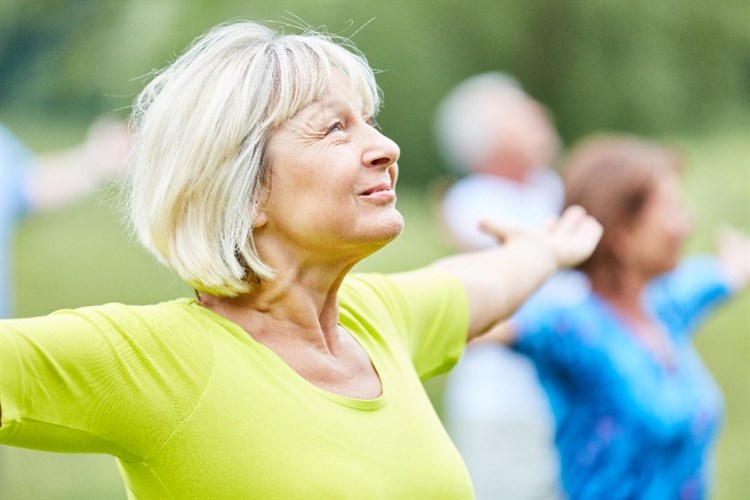6 Ways to Keep Active As You Age
As our bodies grow older, more often than not, we lose some of the physical capabilities we could boast earlier in life. Fortunately, there is no reason aging has to put a stop to life’s many adventures and opportunities!
Though it may not feel easy or natural at first, remaining physically active can have a wide range of positive effects on seniors’ health and wellness, carrying the potential to reduce cognitive decline, improve chronic health conditions, prevent falling, and boost overall mood and quality of life.
To help you with your journey, we’ve put together a list of our 6 best tips for maintaining a healthy, active lifestyle as you grow older:
1) Incorporate daily exercise into your routine.
Regular aerobic and strength-building exercises are essential for maintaining the muscles, bone strength, and balance you need to remain healthy and independent and prevent injuries and major health conditions.
Thankfully, your exercise sessions do NOT need to be very intense or super long. Even 5 or 10 minutes of exercise a day can have significant positive effects on your health. We recommend aiming for around 150 minutes of moderate exercise every week – ideally split up over several days.
It’s important that you implement a variety of exercises into your routine. To keep yourself interested and motivated, try choosing exercises you enjoy – like walking, dancing, swimming, or even yard work. And with strength training, you can use anything from exercise bands and hand weights to makeshift weights in the form of cans and books.
REMEMBER: It is NEVER too late to start exercising! If you haven’t built up a habit of regular exercise, start slowly to avoid incurring an injury.
2) Work on flexibility & balance.
Besides cardio and muscle development, strong flexibility and balance are necessary aspects of physical fitness.
While flexibility can prevent muscle stiffness and soreness and increase circulation, improved balance can help you avoid dangerous falls and injuries that will probably limit your physical activity even more. In fact, as you increase your flexibility and balance, certain aerobic exercises may become easier and easier for you to manage.
To improve your balance, try exercises like walking backwards or sideways, standing on 1 foot, and walking heel-to-toe across the room. To focus on flexibility (as well as balance), give tai chi or yoga a try. If you can’t find a class for seniors in your area, YouTube always offers a variety of FREE helpful tai chi and yoga walk-through videos.
3) Be wise with your terrain.
If you are exercising at home, make sure you clear enough space to exercise safely. Free the space of any hazards, such as loose rugs and carpet, piles of books and papers, and any other clutter.
When choosing activities away from home, try to avoid terrains that will cause an unnecessary strain on your weaker joints. For example, if you experience regular hip or knee joint pain, stick to level walking paths rather than rough, hilly hiking trails.
4) Stay engaged with your environment.
When feeling sore and uncomfortable, it can be very easy to disengage with friends, family, and the surrounding community. By remaining socially involved, you can reduce your chances of depression and self-isolation, conditions that can eventually lead to a sedentary, inactive lifestyle.
As much as possible, strive to stay involved in community activities – with volunteer organizations, social clubs, church groups, or casual gatherings of family and friends.
And don’t forget your hobbies! Whether you play a musical instrument, tend to your garden, try your hand at woodworking, or take your kayak out on a nearby lake, such hobbies will keep you both physically and mentally active.
5) Don’t avoid exercise out of a fear of potential pain.
More often than not, seniors avoid physical activity because they worry about the potential swelling, stiffness, aches, or injuries they could experience. However, this fear is NOT a good reason to say no to exercise.
Though you may experience some minor muscle soreness when you first start exercising, continued physical activity will ultimately REDUCE those unwanted pains.
NOTE: If a certain exercise or movement causes serious or severe pain, stop the activity immediately, get to the doctor if necessary, and try a different activity when you’re feeling well again. Your doctor or physical therapist can suggest exercises that are more appropriate for your specific condition.
6) Set achievable goals & realistic limits.
With exercise (at any stage of life), you’ve got to be realistic. If you overdo it, you’ll be more likely to injure yourself and lose motivation. To avoid burnout and stay injury-free, take things slowly and be honest about what your body can manage.
This not only means creating good, achievable goals, but it also requires you to set clear, safe limits. Need help getting started? Your physical therapist or primary care provider should be able to help!
HME Locations - Home Medical Equipment Locator
Need to find home medical equipment near you? Use our home medical equipment locator tool to find a supplier in your area
.

